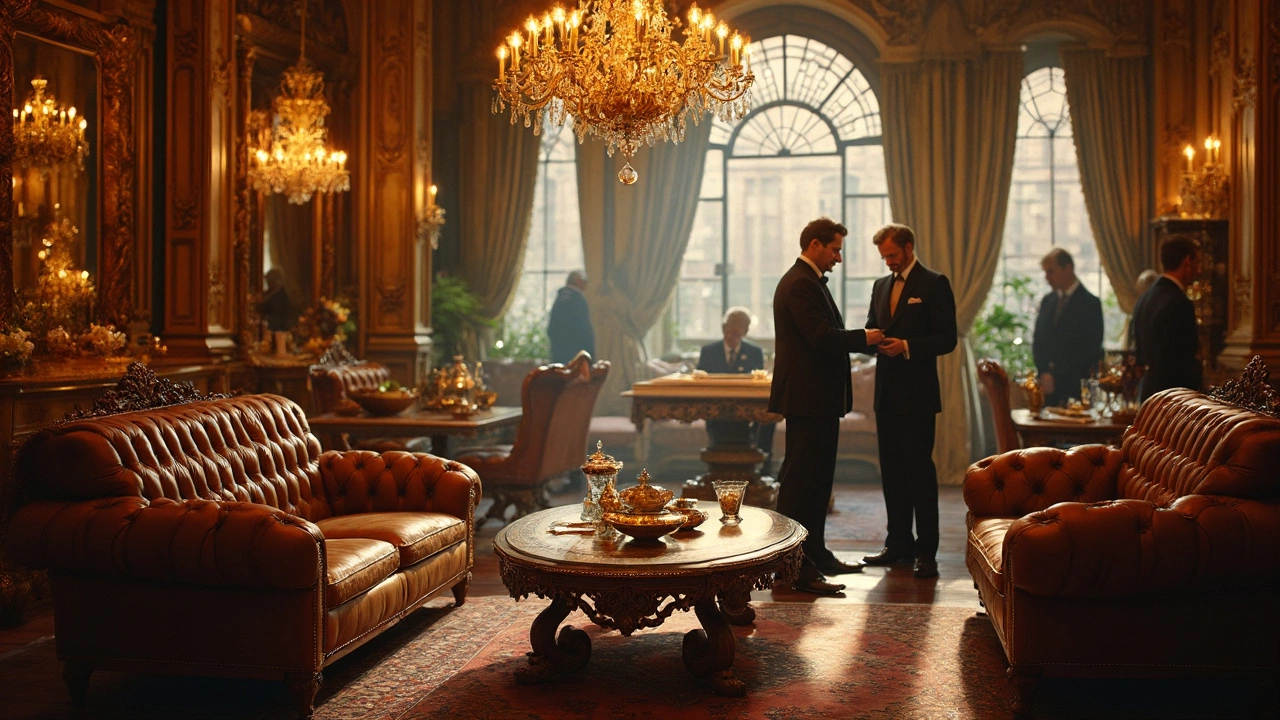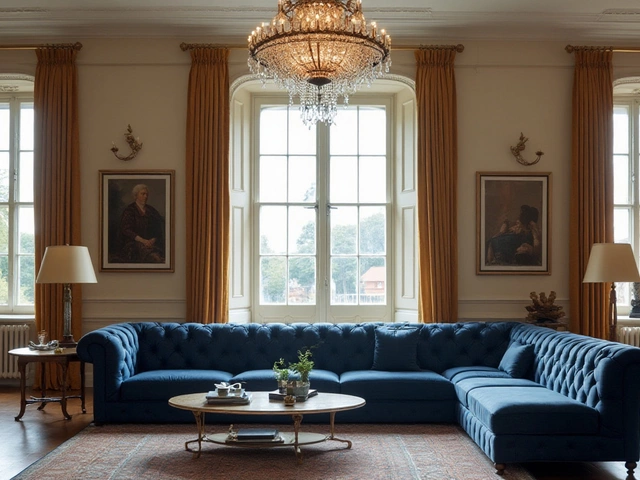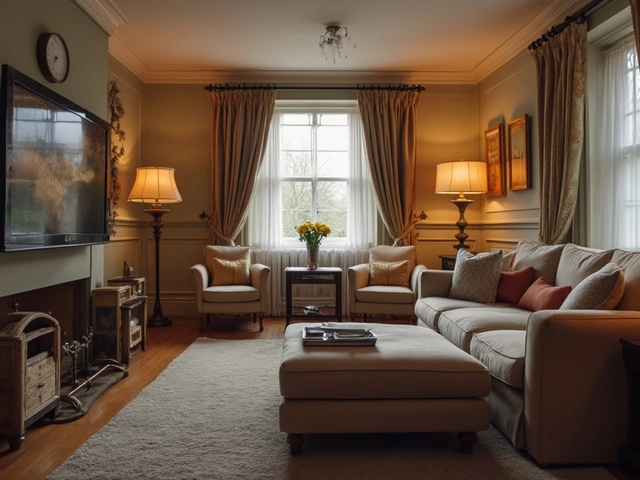Buying furniture can be a real hit to your wallet, and it might surprise you that some pieces are marked up way more than others. We're talking about crazy markups that make you scratch your head, like how is that simple wooden chair priced like it's a designer brand? The furniture industry has a few secrets, and understanding these can save you big bucks on your next purchase.
So, why the steep prices? Well, markups often cover the costs of production, shipping, storage, and employees' commissions, but sometimes they can be, let's say, a bit overzealous. This is especially true for certain types of furniture that are notorious for high markups. But don't worry, with a few insider tips, you can become a smarter shopper and keep more of your hard-earned cash.
- Understanding Markups in Furniture
- Common High-Markup Furniture Items
- Interesting Furniture Industry Facts
- Tips to Avoid Overpaying
- Smart Shopping Strategies
Understanding Markups in Furniture
Diving into the world of furniture sale markups might be like uncovering an intriguing mystery. The markup on a piece of furniture is essentially the difference between the cost for the retailer to acquire it and the price you see on the tag. Often, this can be way higher than you expect.
According to a report by Consumer Reports, a typical markup in the furniture business may run anywhere from 200% to 400%. The reasoning behind this is not just sheer greed; retailers have to cover a range of expenses. From shipping and warehousing to retail space and staff salaries, these costs add up.
"Furniture markups often reflect the cost of carrying large inventory and display floor space," says veteran market analyst Sandra Myers.
What's Driving the High Markups?
There are several factors driving up furniture markup:
- Design & Style: Exclusive designs or trendy styles tend to have higher markups. People are often willing to pay a premium for something unique.
- Brand Name: Just like in fashion, established brands in the furniture world tend to carry a premium.
- Market demand: Popular items that are in high demand will typically have higher markups since stores know they can sell them at a higher margin.
- Customizations: Any alterations from standard offerings can instantly spike up the price due to the perceived value.
Where Markups Are Most Common
In the realm of furniture shopping, some items are more prone to higher markups than others. Upholstered furniture, for example, can see considerable price increases due to fabric costs and labor-intensive production processes. On the other hand, accessories like rugs or decorative lighting can sometimes be marked up more because they're often impulse buys placed strategically in showrooms.
| Item Type | Typical Markup Percentage |
|---|---|
| Rugs | 300%+ |
| Lighting | 250%+ |
| Upholstered Sofas | 200% |
If you're on the hunt for a good deal, a smart strategy could be directly comparing online prices with in-store offers. Often, you might find better pricing or discount offers online given the reduced overhead costs for retailers.
Common High-Markup Furniture Items
When you're shopping for furniture, it's helpful to know which items typically have the highest markups so you don't end up paying way more than you should. Here are some common offenders where retailers tend to maximize their profits.
1. Sofas and Sectionals
The beloved living room centerpiece, the sofa, often sees high markups. These pieces can be marked up anywhere from 200% to 400% from their production cost. Why, you ask? They’re big-ticket items that buyers are usually willing to splurge on, and their production involves various materials and craftsmanship.
2. Mattresses
Many shoppers are surprised to learn that mattresses are one of the most marked-up items in the furniture world. Some reports suggest that markups can reach a whopping 900%! Retailers count on buyer confusion over mattress types and brands, convincing folks to spend more than necessary for a comfortable night's sleep.
3. Accent Chairs
Small but mighty, accent chairs often have steep markups. Their eye-catching designs and trendy appeal can lead to a markup of 250% or more. Many people buy these chairs to match or complement other room elements, making them prime targets for pricing flexibility.
4. Coffee Tables
Coffee tables, while seeming simple, often have markups as high as 300%. The wide variety of materials and styles—from glass tops to intricate woodwork—can drive up prices. Retailers also use them as decor items, increasing their perceived value to justify a higher price.
5. Dining Sets
The dining set is another high-markup item, often marked up between 200% and 400%. These sets include multiple pieces, like tables and chairs, offering a substantial margin for retailers.
Arming yourself with this info can help you avoid falling into the markup trap. Next time you're in a store, you'll know which pieces might be beefed up in price and approach your purchase with confidence.

Interesting Furniture Industry Facts
Diving into the world of furniture reveals some pretty surprising things. Did you know that the average markup for furniture is around 200%? That's right—what you're seeing at furniture sales might be double or even triple the item's cost to the retailer. Now, that's what I call a significant markup!
Quality vs. Markup
People often think that high price equals high quality, but that's not always the case in the furniture industry. Sometimes, you're paying more for branding, especially with those designer pieces that could be easily replicated without the hefty price tag. So while shopping, it's wise to assess the actual quality rather than just the price.Top Markup Categories
It's interesting to note that certain categories typically have higher markups than others. Sofas, for instance, can have a markup of over 400%, especially when bought in big-box stores. Similarly, custom pieces and mattresses can also demand high prices due to their perceived value and uniqueness.Here's a quick glimpse of typical markup percentages in various furniture sale items:
| Item | Average Markup Percentage |
|---|---|
| Sofas | 300-400% |
| Dining Tables | 200-300% |
| Beds | 200-300% |
| Mattresses | Up to 1000% |
Global Industry Trends
Globally, the furniture market is booming, with China leading the way as the largest producer, followed by the United States. As markets expand, the range of options—and markups—continues to grow. Sustainable and multifunctional furniture items are becoming hugely popular as well, reflecting consumer demand for versatility and eco-friendliness.Lastly, technology is playing a big role in furniture, with more online retailers offering savvy consumers the ability to compare prices and read reviews. This digital shift is challenging traditional retail, bringing more competitive pricing—and better deals—for you.
Tips to Avoid Overpaying
Let's cut to the chase—no one wants to shell out more cash than necessary on furniture sale items. Here are some solid tips to keep more money in your pocket while still scoring great pieces.
Do Your Homework
First things first, know the market prices. Browse online and check several stores to see what's the going rate for the furniture you're interested in. Retailers often play with prices, so being informed can help you spot a real deal versus a pumped-up price.
Ask for Discounts
Never shy away from asking for a discount. This might sound old school, but many store managers have some leeway to lower prices, especially if you're buying multiple items or shopping off-season. Sometimes, you'd be surprised at the 10-15% markdown you could snag just by asking.
Consider Alternatives
Think about checking out places like outlets and thrift stores. They often carry pieces with minor flaws that aren't noticeable, and you could save big. Plus, a little DIY touch can transform a second-hand item into a centerpiece!
Check Out Sales and Clearance
Keep an eye out for sales, especially on big holidays like Black Friday or Labor Day. Retailers usually discount significantly to clear out inventory. Also, clearances can yield treasures for a fraction of the cost.
Leverage Price Matching
Many stores offer price matching with their competitors, so if you find a better deal at another store, don't hesitate to bring it up. It’s a simple yet effective way to save on a furniture shopping spree.
Here's a little reminder: High markup doesn't always mean high quality. As appealing as that lavish sofa might look, make sure it’s truly worth the price, not just marked up for profit. Stay savvy, and happy decorating!

Smart Shopping Strategies
Ready to score the best deals on furniture sales without getting caught in the dreaded high-markup trap? Here are some smart strategies to ensure you get great value for your money, and maybe even snag a few surprises along the way.
1. Do Your Homework
Before you step foot into a store, do a bit of research. Search online to compare prices and check the manufacturer’s suggested retail price. Sometimes, you’ll find that online discount sites offer way better deals than your local store. Check customer reviews to see the real value behind the purchase.
2. Time Your Purchase
Timing can be everything when it comes to furniture shopping. Most stores offer clearance sales during spring and fall seasons to make room for new inventory. Keep an eye out for holiday sales like Memorial Day and Black Friday too, as these can have some of the best discounts of the year.
3. Make Friends with the Sales Staff
When you’re in-store, don't shy away from a little friendly chat with the salespeople. They might let you in on upcoming sales and showroom pieces that are going at great prices. Plus, they can sometimes offer additional discounts or arrange for free delivery.
4. Consider Alternative Buying Methods
- Check out furniture rental places that often sell used furniture at knockdown prices.
- Look into online marketplaces like Facebook Marketplace or Craigslist for second-hand steals.
- Consider DIY options for some simple furniture pieces that you can put together yourself.
5. Negotiate Like a Pro
Don’t be afraid to negotiate. Many furniture stores expect some haggling and are willing to knock off a few bucks if it means closing a sale. Remember, the worst they can say is no, so it's worth a shot!
6. Evaluate Quality Over Hype
Fancy brands don’t always offer the best durability. Sometimes, it’s the lesser-known local makers who provide true value for money. Don't get dazzled by a logo—check the material and construction quality. Look for solid wood pieces, durable fabrics, and sturdy joinery.
7. Dig Into the Hidden Details
If you're unsure about the markup, ask the right questions. Where is this piece made? What's it constructed of? These factors often play a big role in pricing, and getting clear answers can help you decide if the markup is justified.



